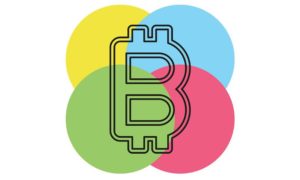Bitcoin vs Bitcoin Cash: The Split, Differences, and Problems
Bitcoin vs Bitcoin Cash is still a controversial topic. But when did the Bitcoin split happen and what problems did it create?

The Bitcoin network was not designed to handle a high volume of transactions. As this cryptocurrency became more popular, these constraints became more apparent. To solve this, Pieter Wuille came up with a solution called Segregated Witness – SegWit. This solution was voted in as an upgrade through a soft fork, but some miners and other people with mining interests were not happy with the solution – namely Roger Ver and Jihan Wu. These people were advocating for bigger blocks to get more transactions per block. SegWit takes the signature out of the block, freeing space in the current small block for more transactions, which big block proponents didn’t like.
Bitcoin Cash is Born
On August 1st, 2017, the soft fork that brought the SegWit updated took place. Along side that fork, big block proponents opted for a hard fork split from Bitcoin’s chain, creating Bitcoin Cash (BCH). On the surface this solved one of the most painful debates in the history of Bitcoin, but then came the struggle for Bitcoin’s name.
Bitcoin Cash proponents like Roger Ver, started calling Bitcoin Cash “the real Bitcoin.” If the community thought that with SegWit and the Bitcoin Cash hard fork they could look ahead to a period of peace, they were wrong. The battle for Bitcoin’s name – as ridiculous as it might sound – threatened to confuse users, especially newcomers.
The Problem with Bitcoin’s Name
Bitcoin is not just another name to fight over, especially given that Bitcoin Cash did not change the format of its addresses when it forked from Bitcoin. A BCH address looks exactly like a legacy BTC address, which means that if people promote BCH as “the real Bitcoin,” they put users – especially new users – at risk of sending BTC to a BCH address or vice versa. If this happens, those coins will be lost forever.
Beyond Clarity
Bitcoin Cash even promoted a logo that looks just like the Bitcoin logo, and through Bitcoin.com – a website owned by Roger Ver – Bitcoin Cash found an outlet that would promote it as “the real Bitcoin” under a URL that looks like it is an official Bitcoin outlet. Therefore, users must understand the difference and pay attention to the addresses they send funds to. It is important to confirm with the party that is supposed to receive the funds, whether it is a BTC or a BCH address, although there is no doubt whatsoever that BTC is the only Bitcoin out there.
Other than that, people can choose the kind of currency that suits them best. If they like the idea of big blocks – although there have been various concerns about centralization on the Bitcoin Cash chain – they can use BCH. If they support small blocks, then they can use Bitcoin.
Bitcoin vs Bitcoin Cash: Similarities and Differences
Given these differences and similarities, the markets, users and newcomers to the sphere must deal with a more complex playing field than the one they had to deal with up until July 31st, 2017. To understand how to navigate these complexities, we can start by analyzing the implications of the similarities between BTC and BCH:
- Marketing – At this level, it is easy for newcomers to confuse BTC and BCH, since they have an almost identical logo. Differing ticker symbols should help. Seasoned users can tell the difference right away.
- Mining – Since both BTC and BCH share the SHA 256 algorithm, they compete for mining resources. This is particularly problematic since mining difficulty on BTC adjusts every 2016 blocks whereas on BCH it adjusts every block.
- Network Effect – Given that BCH is a BTC fork, all Bitcoin holders up until August 1st, 2017, were given the opportunity to split their coins and have an equal amount on the forked chain. Therefore, Bitcoin Cash started out with a strong network of users.
- This last point makes it easy for exchanges, wallets and other services to add BCH.
The implications of the differences between BTC and BCH might not be as well known, yet they are deeply influential:
- 8mb blocks on BCH allow for more transactions to be added to each block, although SegWit, by moving signatures out of blocks, also gives BTC the capability to add more transactions to each block without increasing block size.
- Despite allowing for more trans actions to be included on a single block, the 8mb threshold makes it more expensive to run a node – more computing power is needed – generating doubts about the degree to which BCH is decentralized.
- Failure to adopt SegWit on BCH also means that those who can implement ASIC Boost, will run a mining operation that is around 25% more efficient, which can put other miners out of business.
Settling the Bitcoin vs Bitcoin Cash Argument
Whichever cryptocurrency people decide to use, the Bitcoin vs Bitcoin Cash argument has been settled, despite any attempt from BCH supporters to portray the currency they support as “the real Bitcoin.” Big blocks do not belong in the Bitcoin network; anyone who wants them can flip their coins to BCH through an exchange, keeping in mind the issue with the public addresses. Only the market will decide if there is enough space for Bitcoin and for Bitcoin Cash, or if the future of one of them will come at the expense of the other.







